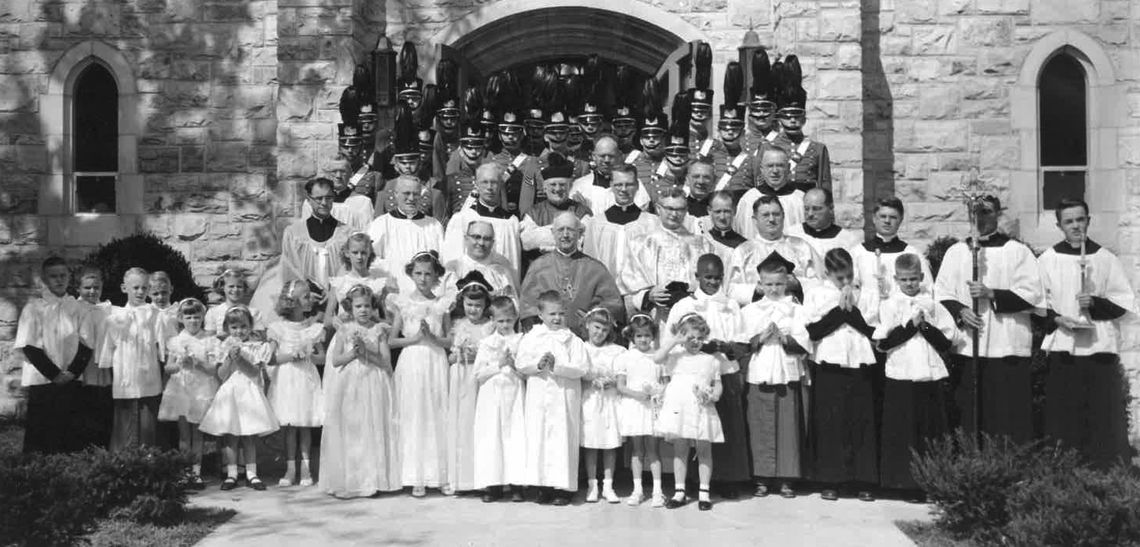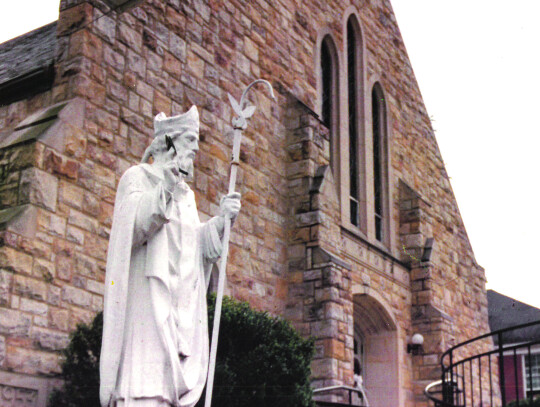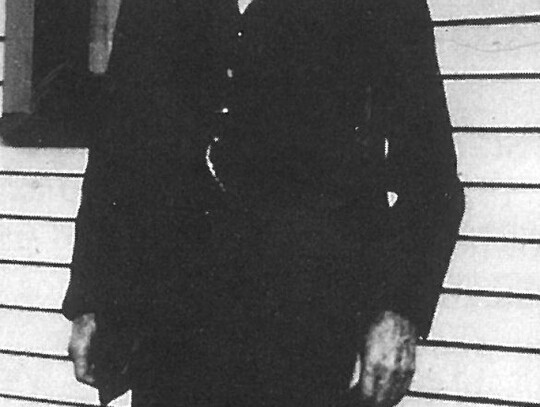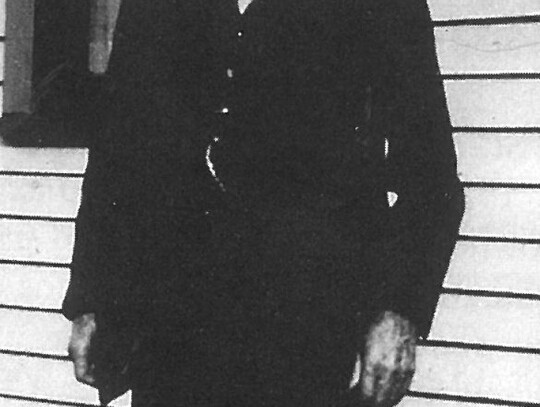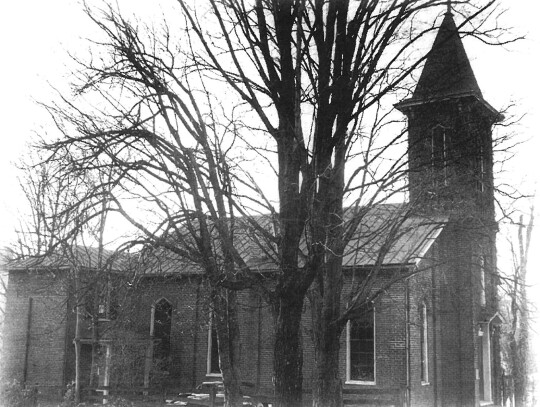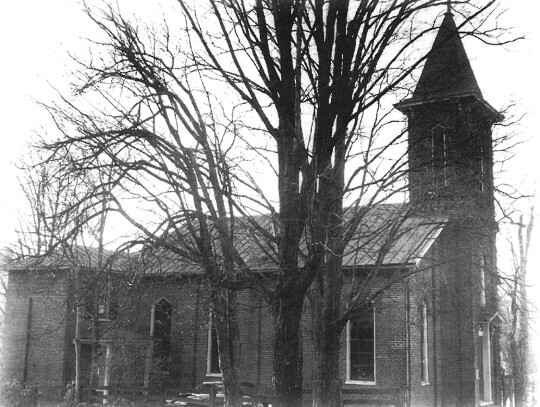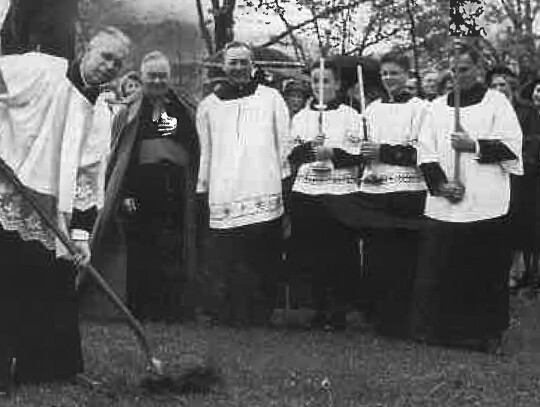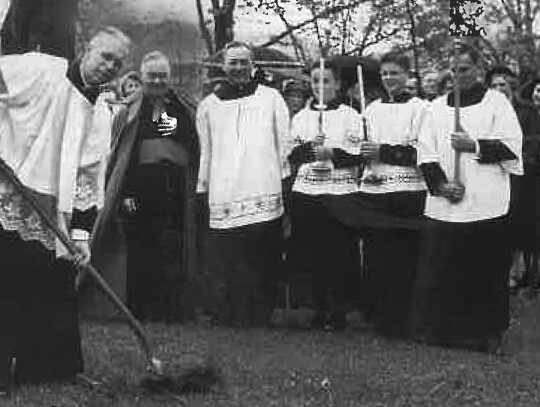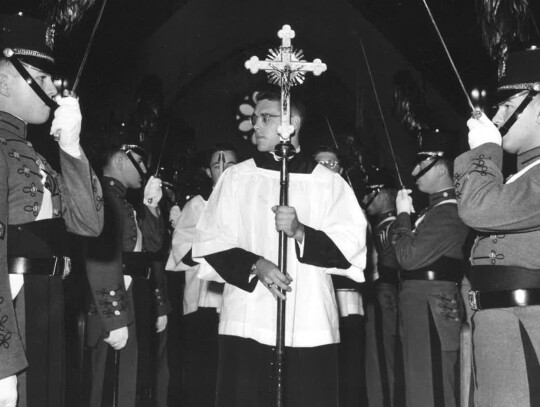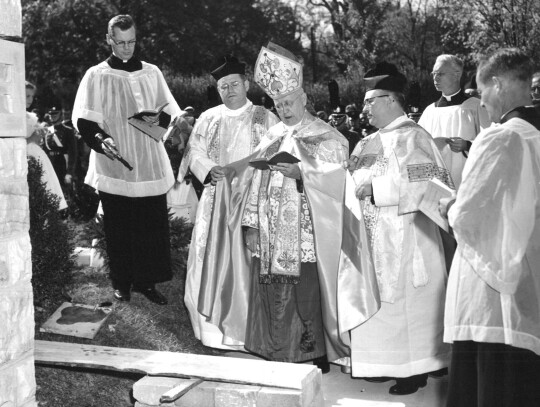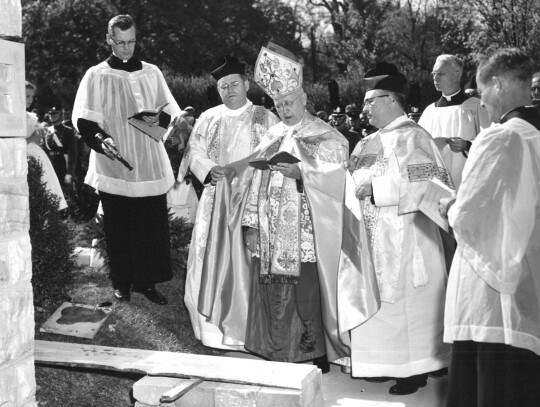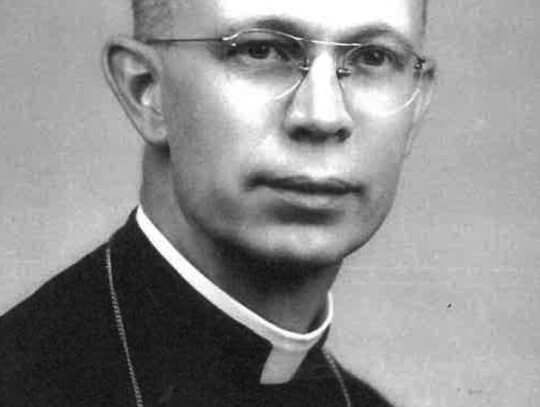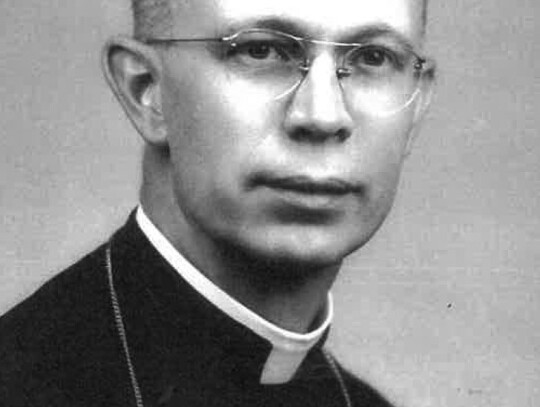Editor’s note: The following story compiled by a member of St. Patrick Catholic Church is based almost exclusively on parish histories written in 1953 and 2003 by, respectively, Ruth S. Holland (1892-1972), dedicated member of the parish, and Maj. Gen. James M. Morgan (1923-2021), parishioner and VMI professor of civil engineering and dean of the faculty. Matthew W. Paxton IV provided historical context for religious freedom in early Virginia.
From its humble beginnings in 1843 as a small mission parish of Lynchburg, at a time when visiting priests celebrated mass in parishioners’ private homes or in the local fire station, Lexington’s small Catholic community slowly grew until, in 1873, a permanent church was built on Henry Street and named Saint Patrick Catholic Church. As the parish continued to grow, a new church was built in 1953 at the current location on West Nelson Street. Today, Saint Patrick’s is home to a vibrant Catholic community of 865 members, plus 300 registered students from Washington and Lee University, Virginia Military Institute and Southern Virginia University.
Religion in Early Virginia
Establishing a Catholic presence in the commonwealth of Virginia was no easy feat. During the entire Colonial period (16071783) and first years of American Independence, it was illegal to be a Catholic in Virginia. The Church of England was the established church and colonists were legally required to attend its services and support its ministers financially.
In June 1776, the adoption of George Mason’s “Virginia Declaration of Rights” guaranteed the “free exercise of religion,” but left unresolved whether the new state could maintain an established church and support it with taxes. The end of the Revolutionary War marked a turning point for the issue of religion in Virginia. In 1785, James Madison reintroduced Thomas Jefferson’s original bill “for establish-
A STATUE of St. Patrick of Ireland, the parish patron of St. Patrick Catholic Church, stands in front of the current church on Nelson Street, which was completed in 1953. The first church building, constructed in 1873, still stands on Henry Street, now the home of the Gospel Way Church of God in Christ.
continued from page B1
ing religious freedom.” The “Virginia Statute for Religious Freedom” was adopted and signed into law in January 1786.
Soon after, Catholics began establishing communities in Alexandria, Portsmouth and Norfolk, at a time when there were fewer than 200 Catholics in Virginia. French Catholics escaping the French Revolution (1789-1799) also settled these port cities. In 1788, the Rev. John Carroll was appointed the first Catholic bishop in the U.S. in Baltimore, its first diocese. Virginia became part of this diocese, where it remained until 1820, when the Diocese of Richmond was founded. In 1795, the Basilica of Saint Mary in Alexandria became the first Catholic church in Virginia, due in part to a generous donation from George Washington.
However, it was not until the construction of canals and railroads pushed westward toward the Blue Ridge from Richmond that a Catholic presence was noted in western Virginia. Irish-born construction laborers (known locally in Crozet as “Corkonians” as many had emigrated from County Cork, Ireland) were in demand by both transportation systems.
Leaders: Maintaining a Catholic Presence
The history of any enduring community is the story of exceptional individuals – strong leaders of vision, fortitude, and courage.
Saint Patrick of Ireland
In the case of Saint Patrick Church, that story begins with parish patron, Saint Patrick of Ireland, the fifth century saint whose faith and courage returned him to the land of his oppressors to preach the Word of God. Patrick was born around 387 A.D. in the Roman province of Britain. In his 16th year, Patrick was abducted by Irish pirates and sold into slavery to an Irish chieftain. While praying for his freedom, Patrick taught himself the Celtic language and customs, believing that his ordeal was preparing him for his future mission.
After six years, Patrick escaped. In preparation for his return to Ireland, he traveled to monasteries in Tours, Auxerre and Rome, where he was ordained as Bishop Patrick. He died on March 17 in 461 A.D, having remained faithful to his calling, bringing the Catholic faith not only to fifth century Ireland, but to the many lands visited by her missionary sons and daughters.
The Mission Priests ?
In 1841, there were only four priests in Virginia, who not only served their resident churches, but also traveled to mission parishes.
Lexington became a mission parish of the Lynchburg Catholic church in 1843. For the next 30 years, priests from Lynchburg and Staunton traveled to Lexington via packet boats, horseback, and carriages, to celebrate mass in parishioners’ homes or at the old firehouse (today’s Lexington Visitor Center).
Based on his diocesan travels, the fourth Bishop of Richmond, James Cardinal Gibbons, soon began planning for a permanent parish in Lexington. The following is an excerpt from his 1872 diary.
Subscribe to
qÜÉ=kÉïëJd~òÉííÉ
for your answers. Call 463-3113.
“Nov 11: This evening took the packet boat from Lynchburg for Lexington. [Due to] a break in the canal, Father Murray and myself were obliged to go by carriage from Thomson’s Landing to Lexington.
“Nov 12: Father Murray said Mass in the engine house where I confirmed 10 persons. Same evening, I joined in Holy Matrimony, John B Purcell and Olympia Williamson in the house of Col. Williamson, the bride’s father.
“Nov 13: At 2 am, started by stage, reaching Goshen, and then by rail to Richmond, where I arrived at 6 pm the same day.”
A year later (1873), Saint Patrick Catholic Church on Henry Street was built. The Diocese of Richmond had purchased the land for $285. Parishioners contributed the $3,000 construction costs from a fundraising church supper; Protestant friends assisted and attended the fundraiser. The original church still stands, now home to the Gospel Way Church of God in Christ. After 150 years of service to two religions, Roman Catholic and Baptist, the structure has provided an attractive place of worship for the Lexington community.
Parishioner and businessman John Sheridan helped with the financing of the new church. An Irish immigrant and Civil War veteran, Sheridan built a livery to run his mail delivery and stagecoach business in 1887. In his book “Lexington in Old Virginia,” Henry Boley noted “the Catholic Church was never large in Lexington, but it was always well represented. Parishioner John Sheridan was one of the most charitable citizens who ever lived in Lexington.”
In 1892, Saint Patrick parish reverted to mission status and remained a mission parish for the next 54 years. The maximum reported population during those years is 99 in 1938. From 1892 until 1946, mission priests traveled each month to Lexington on the Saturday train, celebrated masses on Sunday and again at 6 a.m. on Monday, and then caught the 8 a.m. northbound train on Monday to attend their regular pastoral duties.
A Mid-Century Revival
During World War II, Bishop Peter L. Ireton had arranged with the Society of the Precious Blood (C.P.P.S.) in Carthagena, Ohio, to provide priests to Saint Patrick parish.
This promise was fulfilled with the arrival in 1946 of Father Aloys G. Selhorst, the individual most responsible for today’s Catholic community. Born in Ohio in 1912, Father Selhorst began studying for the priesthood at age 15. He was ordained in 1939 at age 26, served in Cleveland until 1943, and then in the Pacific for three years as an Army chaplain. He was then assigned to Lexington, where he served for 10 years, until his transfer to California.
The new priest was popular among parishioners and townspeople alike - he joined civic organizations, including the local baseball team, and established parish committees: Holy Name Society, Ladies Altar Society, and Newman Clubs at VMI, W&L and Southern Seminary. He tried to reach the entire county by inviting the diocesan Motor Chapel, St. Mary of the Highways, to the area, starting with Glasgow, in 1948.
Believing that the small Catholic population in Rockbridge County would grow, Father Selhorst’s first goal was to find land for a new church and rectory. The site he chose, the Gassman property on Nelson Street, was purchased by Bishop Ireton in 1948; it included a residence, now the parish house, renovated in April 1949, plus land for a new church.
A National Fundraising Campaign
Prior to the construction of the new church, a national fundraising campaign was conducted. Chairmen of this effort were Jean Smith Augustine of New Haven, Conn., 1938 graduate of Southern Seminary; Walter McDonald of Cincinnati, Ohio, a 1910 graduate of W&L; and Col. J Addison Hagan of Norfolk, a 1916 graduate of VMI. Thomas McNamara, graduate of both VMI and W&L Law, served as the university’s alumni chairman, and Kirby Bernich, a 1951 VMI graduate, was the Institute’s alumni chairman. More than $100,000 - equivalent to $1.3 million today - was raised.
Father Selhorst broke ground for the new church in April 1952. Construction commenced in June and was completed 11 months later in May 1953. Bishop Peter L. Ireton presided over the dedication in October 1953.
Father Selhorst, and his six C.P.P.S. priests, served the parish from 1946 to 1979. Following their 33-year tenure, the Diocese of Richmond resumed their role of making priestly assignments in 1980. Residents may recall some of these former pastors of Saint Patrick’s: the Reverends Dennis Sweeny (1980-1984), James Noto (1984-1989), J. Morton Biber (1989-1995), Alan Lipscomb (1996-2005), and Joseph D’Aurora (2005-2021).
The current pastor of Saint Patrick Catholic Church, the Rev. Stefan Migac, arrived at Saint Patrick’s in July 2021. Father Stefan was born, on Saint Patrick’s Day, in Slovakia where he started seminary formation in the Archdiocese of Kosice. He transferred to St. Mary’s Seminary in Baltimore, graduating with an M.A., M. Divinity, and a B.S.T. His diocesan assignments include pastor of the Central Virginia Catholic Cluster of parishes in Blackstone, Meherrin, and Farmville. Father Stefan is an associate chaplain for the Order of Malta and a chaplain in the U.S. Army Reserves.
- As the people of Saint Patrick Catholic Church celebrate the 150th anniversary of their parish, they recall with gratitude the individuals who established this parish – the dedicated mission priests, the leaders of the fundraising campaign, Father Selhorst and the C.P.P.S. priests, and that enduring inspiration for any life of devotion and service - parish patron Saint Patrick of Ireland.
THIS OLD PHOTO shows the original St. Patrick Catholic Church building on Henry Street. The Gospel Way Church of God in Christ now occupies the building.
FATHER Aloys G. Shelhorst breaks ground for the new church building on Nelson Street on April 27, 1952. The church was completed 11 months later in May 1953. It was dedicated in October of that year.
VIRGINIA Military Institute cadets form an arch of sabers for the church dedication ceremony in 1953.
BISHOP Peter L. Ireton and the Rev. Isidore McCarthy, with the Society of Precious Blood, lay the cornerstone of St. Patrick’s Church in 1953.
FATHER Aloys G. Shelhorst arrived to lead St. Patrick Catholic Church in 1946.

